Clancy Tucker's Blog, page 218
June 25, 2016
26 June 2016 - MARTIN CASH - BUSHRANGER

MARTIN CASH- BUSHRANGER -
G'day folks,
Martin Cash (1808-1877), bushranger, was born at Enniscorthy, County Wexford, Ireland, the son of George and Margaret Cash. He worked as a farm boy in Wexford until convicted in March 1827 of housebreaking.
His own account of the crime was that he shot, through the house window, at a man who was embracing his (Cash's) mistress. His claim that the ball wounded his rival in the buttocks may be thought to add some verisimilitude to the story. Six months later he was transported to Sydney for seven years in the Marquis of Huntley. He was assigned to George Bowman and continued to work for him in the Hunter River valley after receiving a ticket-of-leave. Becoming involved in cattle duffing, he left for Van Diemen's Land, accompanied by Bessie Clifford, arriving in February 1837 in the Francis Freeling.
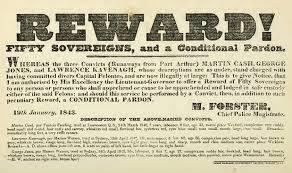
Two years later he was convicted of larceny and again sentenced to seven years. In the next three years he escaped three times; once he evaded capture for nearly two years, but was returned to Port Arthur with an additional four years to his sentence. Soon afterwards, with two experienced New South Wales bushmen, Kavenagh and Jones, he successfully eluded two guards at Port Arthur. The three pursued a bushranging career on foot, robbing inns and the houses of well-to-do settlers with seeming impunity, and without the use of unnecessary violence, thus earning them the reputation of 'gentlemen bushrangers'.
On hearing that Bessie Clifford had deserted him for another, Cash risked a visit to Hobart Town, but was captured and was tried for killing one of his pursuers. Some popular sympathy had been aroused for Cash, and for Kavenagh who had given himself up, by Robert Murray's campaign against capital punishment. Although the services of Edward Macdowell, a former attorney-general, were secured in his defence, sentence of death was passed. At the eleventh hour the decision was reconsidered, opinion sought from England, and Cash remanded for fourteen months.

The final decision, left to the lieutenant-governor, was for transportation for life, and Cash was sent to Norfolk Island to be held there for ten years. By then greatly subdued, his career from December 1844 was quiet. He was given some responsibility in charge of the boys' dormitory, and even earned some fame as a hat-maker.
In March 1854, just before the establishment broke up, he was given permission to marry Mary Bennett (1824-1879), a convict from County Clare.
Six months later he received a ticket-of-leave, and soon afterwards returned to Tasmania where he had been gazetted a constable for the Cascades Agricultural Settlement. He worked for some time as overseer at the gardens in the government Domain, Hobart, and, on receipt of a conditional pardon in May 1856, went to New Zealand for four years. On his return he bought a property at Glenorchy and farmed there until his death on 27 August 1877. He was survived by his wife; their only child Martin, born in 1855, had died in 1871. Cash's Irish charm and cheerfulness, and the chivalry and enterprise of his rebelliousness, made him a popular scoundrel, in his later years known to all and enjoying the goodwill of all.

Before his death Cash made the acquaintance of James Lester Burke, an Irish expiree and able writer, who induced him to narrate his career. Burke edited the account which gives a rather coloured version of the truth. First published in Hobart in 1870, the book has been reprinted many times. A sketch of Cash by Alfred Bock is in the Dixson Collection, Sydney.

Clancy's comment: One of our more notorious bushrangers.
I'm ...


Published on June 25, 2016 15:23
June 24, 2016
25 June 2016 - THE BURMA-SIAM RAILWAY

THE BURMA-SIAM RAILWAY
G'day folks,
The Burma Railway, also known as the Death Railway, the Burma–Siam Railway, the Thailand–Burma Railway and similar names, was a 415-kilometre railway between Ban Pong, Thailand, and Thanbyuzayat. Since 1945 prisoners of war and the Thai–Burma railwayhave come to occupy a central place in Australia’s national memory of World War II.
There are good reasons for this. Over 22 000 Australians were captured by the Japanese when they conquered South East Asia in early 1942. More than a third of these men and women died in captivity. This was about 20 per cent of all Australian deaths in World War II. The shock and scale of these losses affected families and communities across the nation of only 7 million people.
This website focuses on Hellfire Pass(Konyu Cutting), the deepest and most dramatic of the many cuttingsalong the Thai–Burma railway. Not all Australian POWs worked here in 1943. Nor was the workforce in this region exclusively Australian. However, in recent years Hellfire Pass has come to represent the suffering of all Australian prisoners across the Asia–Pacific region. The experiences of prisoners elsewhere were, in fact, very diverse but this website can only hint at these.

The Thai–Burma railway (known also as the Burma–Thailand or Burma–Siam railway) was built in 1942–43. Its purpose was to supply the Japanese forces in Burma, bypassing the sea routes which had become vulnerable when Japanese naval strength was reduced in the Battles of the Coral Sea and Midway in May and June 1942. Once the railway was completed the Japanese planned to attack the British in India, and in particular the road and airfields used by the Allies to supply China over the Himalayan Mountains.
Aiming to finish the railway as quickly as possible the Japanese decided to use the more than 60 000 Allied prisoners who had fallen into their hands in early 1942. These included troops of the BritishEmpire, Dutch and colonial personnel from the Netherlands East Indies and a small number of US troops sunk on the USS Houstonduring the Battle of Java Sea. About 13 000 of the prisoners who worked on the railway were Australian.
When this workforce proved incapable of meeting the tight deadlines the Japanese had set for completing the railway, a further 200 000 Asian labourers or rōmusha (the precise number is not known) were enticed or coerced into working for the Japanese.
The 415-kilometre railway ran from Thanbyuzayat in Burma (now Myanmar) to Non Pladuk in Thailand. It was constructed by units working along its entire length rather than just from each end. This meant that the already difficult problems of supply became impossible during the monsoonal season of mid-1943.
Starved of food and medicines, and forced to work impossibly long hours in remote unhealthy locations, over 12 000 POWs, including more than 2700 Australians, died. The number of rōmushadead is not known but it was probably up to 90 000.
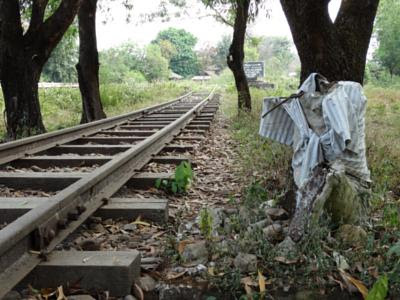
All memory is selective. Communities, like individuals, remember some stories of the past while forgetting others. For memories to survive at the collective or national levelthey need to be championed — not just once but over the decades.
Many Australianshave performed that role for prisoners of the Japanese. In the decades after World War II ex-prisoners published their memoirs and eye-witness accounts. Many of these proved to be immensely popular. Russell Braddon’s The Naked Island (1951), for example, sold well over a million copies and stayed in print for decades.
There were also memorable fictional accounts of captivity, some of which were adapted for commercial films and television series. The most famous of these was The Bridge on the River Kwai which, though bearing little resemblance to events in 1942-43, generated a popular interest in the railway which continues to this day.
In the 1980s Australian ex-POWs returned to Thailand and reclaimed Hellfire Pass from the jungle which had swallowed it when the Thai–Burma railway was demolished after World War II. The cutting soon became a site of memory for many Australians, particularly on Anzac Day. Its dramatic scale and its towering walls, scarred with drill incisions made by hand, spoke particularly vividly to the hardships endured by POWs along the railway.
The building of the Hellfire Pass Memorial Museum by the Australian government in 1998 also made it a key site of memory, attracting tourists and ‘pilgrims’ of many nationalities.

But ‘Hellfire Pass’ was more than just a cutting. In its vicinity a sequence of bridgesand embankmentswere needed to keep the railway route along the escarpment level. There were also many campshousing the thousands of workers, including Australians. These have now disappeared into the exquisitely beautiful landscape but this website reclaims them as witnesses to the POW story.
Over the years this story of atrocity and suffering has become an affirmation of Australian courage and resilience. Although prisoners of war suffered the humiliation of being defeated and captured, they came to be portrayed as men who had triumphed over adversity. Displaying in captivity the qualities of humour, resourcefulness and mateship, they were able to integrate their experiences into the dominant national memory of war since the Gallipoli campaign of 1915, the Anzac ‘legend’.

The POW experience is also remembered for service of the medical personnelwho, with little equipment or medicines, cared for desperately ill menin primitive hospitals. Most famous of these doctors is the POW surgeon Sir Edward ‘Weary’ Dunlop. His statue now stands outside the Australian War Memorial, Canberra, not so far from another iconic image of compassion, Simpson and his donkey. Although Dunlop was only one of 106 Australian POW medical officers, in recent years he has come to represent them all ‒ and the values of courage and compassion that they and many Australians manifested in captivity.

Clancy's comment: I've visited the entire area twice, and both times I was moved by what I saw. Over the years I've also met a few soldiers who worked on this railway. They were very stoic and interesting characters. Visit the area if you get the chance. The memorial gardens are superbly maintained.
I'm ...


LEST WE FORGET.
Published on June 24, 2016 05:43
Clancy's Blog (2) - 25 June 2016 - SPECIAL MESSAGE - CHANGE OF EMAIL ADDRESS

SPECIAL MESSAGE
- CHANGE OF EMAIL ADDRESS -
G'day folks,
Am still having problems sending my blog. Sadly, Outlook has renovated its site, and in its wisdom it has made things complicated. Man, why don't they just leave things as they are if they are working fine?
I will now attempt to send you the posts from the past few days, via my Yahoo address: clancy.tucker@yahoo.com.au

So, you might have to check your junk mail box to find it. Once you've cleared it, the daily posts should be okay, and come to you regularly. Ho hum ...
Here are the posts for the past four days, which were posted every day, but sending my personal email to you was the problem. Don't forget: My blog is always available on Google+, Facebook, Twitter and LinkedIn.
Thanks for your emails ... And your patience.
25 June 2016
24 June 2016
23 June 2016
22 June 2016
Mm ... Start the prayer meeting now. Fingers and legs crossed ...
 I'm ...
I'm ... 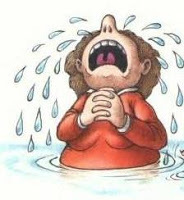
Published on June 24, 2016 05:43
June 23, 2016
24 June 2016 - THE AUSTRALIAN BUSH
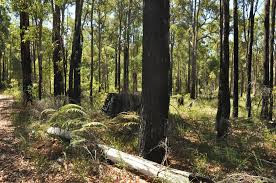
THE AUSTRALIAN BUSH
G'day folks,
Welcome to the Australian bush. We sure have plenty of it.
What is it about 'the bush' that is so special to Australians? The bush has an iconic status in Australian life and features strongly in any debate about national identity, especially as expressed in Australian literature, painting, popular music, films and foods.
The bush was something that was uniquely Australian and very different to the European landscapes familiar to many new immigrants. The bush was revered as a source of national ideals by the likes of Henry Lawson and Banjo Paterson. Romanticising the bush in this way was a big step forward for Australians in their steps towards self-identity. The legacy is a folklore rich in the spirit of the bush.
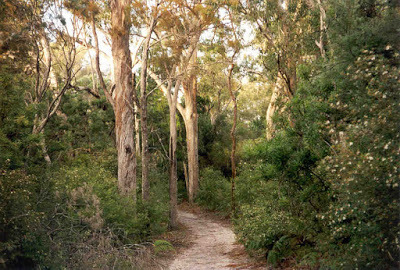
Folklore, 1790s–1890s Many Australian myths and legends have emanated from the bush. Early bushranging – ranging or living off the land – was sometimes seen as a preferred option to the harsh conditions experienced by convicts in chains. Later bushrangers such as Jack Donohue, Ben Hall and Ned Kelly were seen as rebellious figures associated with bush life. Their bushmanship was legendary as well as necessary.
The bush has evoked themes of struggle and survival epitomised in tales of bushrangers, drovers, outback women and lost children. The bush has also been seen as a source of nourishment and survival. These two opposing elements were often brought together by the activities of the Australian 'black trackers'.
The skills of Indigenous people in 'the bush', especially their tracking abilities, was seen as miraculous and became legendary in the minds of European Australians. Indigenous people's knowledge of the land, at the core of their spiritual beliefs, is expressed in stories, arts and performance - music, songs, dance and ceremony.
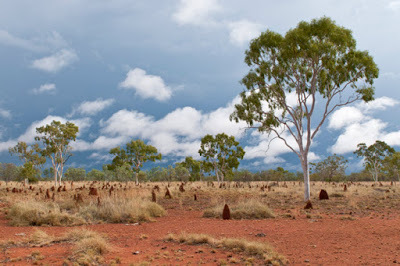
Romantic idealism, 1890s – The 'bushman'
The 1890s saw a continued increase in nationalism and with it the creation of the Australian bush legend – an extension of the goldfield legend. The characters of the bush were imbued with the same qualities that the diggers on the goldfields possessed.
Around 1900, the bush was seen as the foundation of nation's greatness when the features of bush life - sleeping in the open air, learning to ride and shoot, fighting bushfires – were seen to prepare people for battle. This fused Australia's bush and military traditions when it seemed to prove itself with the ANZACs in World War I. The 'bushman' was seen as a resourceful, independent man who trusted only his mates.
The bush was a symbol for a national life and yet, by 1910, most Australians were urban. The bush myth has endured as novelists, poets, and artists continue to use it for inspiration. Elements of bush culture have been absorbed into mainstream Australian life through music, pop songs, clothing, slang, arts and architecture.
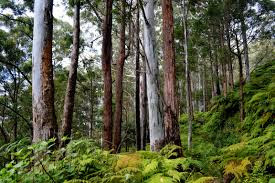
PaintersThe 'plein air' painters, 1880s–1890s
The painters of the Heidelberg School – the likes of Tom Roberts, Frederick McCubbin Charles Condor, Hans Heysen and Arthur Streeton - were the first Australian painters to attempt to capture a 'momentary effect' in the Australian landscape with a 'general impression of colour'. They were seen to capture the light, colour and mood of the Australian bush. Along with the bush poets and writers, they formed a clear expression of Australian identity.
The story of children lost in the bush has had a long tradition in written and illustrated form. For example, McCubbin's painting Lost in 1886 was created after twelve-year-old Clara Crosbie was lost in the bush near Lilydale in 1885, but found alive three weeks later.
Poets and writers
Poets and novelists such as Banjo Paterson, Miles Franklin, EJ Brady and Barbara Baynton, among others, were inspired by the experiences of Australians living and working in the bush. Henry Lawson believed that an Australian identity must emanate from its own soil, not from the safe green fields of the mother country, Britain. He was not alone in this view.
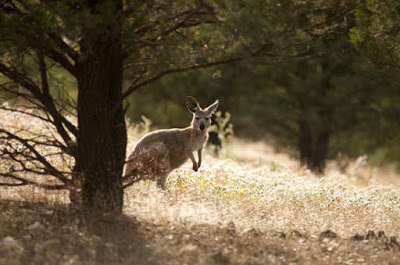
Bush poets and bush songs
Bush songs devised by ordinary, everyday people are a record of the people's experiences of living, surviving and dying in the bush, as well as the colourful slang of bush life. The most famous of these bush ballads is Waltzing Matilda , Australia's unofficial national song about a swagman shearer. Many songs and lyrics, written down for private use, were later assembled and published by A B (Banjo) Paterson as Old Bush Songs (1905). Bush music was handed down as part of an oral tradition, similar to folk music.
The Weekly Bulletin
Australia's first national literary magazine, The Weekly Bulletin (later The Bulletin), not only described the bush, but also published bush writers. It was an influential publication which promoted a particular set of views – egalitarianism, unionism, and 'Australianism'. Both Lawson and Paterson saw the bush as central to 'identity', but in very different ways.
A debate about the real nature of Australian life, saw Lawson and Paterson write about their different perspectives on the Australian bush. This debate is, famously, known as the 1892-93 'Bulletin Debate'. In his poem Up The Country, Lawson claimed Paterson was a 'City Bushman' who romanticised the bush in poems such as The Man From Snowy River . Paterson countered with In Defense of the Bush by claiming that Lawson's view of the landscape was full of doom and gloom.
The argument was followed closely by the Bulletin's significant readership, reinforcing the bush as central to any discussion about national identity.
While Paterson was much more at ease with its wildness, Lawson saw the 'struggle' with the bush as central to our identity.
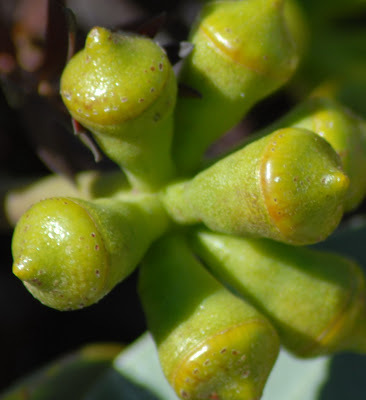
The bush legacy todayThe idea of the bush as integral to Australian identity was reinforced in 1958 when Russel Ward published The Australian Legend. While some critics criticised his interpretation of what comprises a 'typical Australian', he argues that traits such as mateship, anti-authoritarianism, swearing and hard drinking came from the frontier experiences of real bush workers.
Bush ideals have been revered in recent years with television programs like Bush Tucker Man and films like Crocodile Dundee. Many well-known Australian films are built on stories from or concerning the bush. These include Picnic at Hanging Rock (1975), Eliza Fraser (1976), Breaker Morant(1981), Gallipoli (1981), Man from Snowy River (1982), Crocodile Dundee (1986) and Evil Angels (1988). Rabbit Proof Fence(2002) and Ten Canoes (2006) show how the bush is viewed as a source of nourishment for Indigenous people.
The 1980s and 1990s saw the bush become synonymous with drought, debt, depopulation and unemployment. Natural disasters and the natural cycles in the bush of drought, fire and flood have helped define Australian language, a sense of humour as well as comedy, music, poetry and literature.
Distinctive Australian architecture, with its roots in the bush, is recognisable in the rural icons of 'The Queenslander' house, the wool shed and the beach house. Characteristically, these designs used local materials as well as corrugated iron, and emphasised space and light as well as a connection to the landscape.
These qualities have been interpreted in modern Australian architecture with the approach of addressing the landscape, the place and the issues. For example, the Uluru Kata Tjuta Cultural Centre incorporates the Indigenous experience of country.
In his Australia Day address in 2002, author and ecologist,Tim Flannery, said 'Australians could only become a 'true people' by developing 'deep, sustaining roots in the land'. He said the land was 'the only thing that we all, uniquely, share in common. It is at once our inheritance, our sustenance, and the only force ubiquitous and powerful enough to craft a truly Australian people.'

Clancy's comment: I've spent a lot of time in the Aussie bush. I love its smell.
I'm ....


Published on June 23, 2016 16:28
June 22, 2016
23 June 2016 - FACTS ABOUT THE U.S. MILITARY
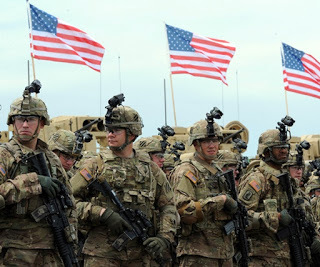
FACTS ABOUT THE U.S. MILITARY
G'day folks,
Here are some interesting facts. Though its roots date back to the Continental Army of the Revolutionary War, the U.S. military did not officially get its start until September 29, 1789, when Congress passed a bill legalizing the small contingent already in uniform. Two hundred twenty-five years later, gets the facts on what’s become the world’s most powerful fighting force.
At the beginning, the military was practically non-existent.
Believing that “standing armies in time of peace are inconsistent with the principles of republican governments [and] dangerous to the liberties of a free people,” the U.S. legislature disbanded the Continental Army following the Revolutionary War, except for a few dozen troops guarding munitions at West Point, New York, and Fort Pitt, Pennsylvania. Yet it also called upon four well-manned state militias to provide 700 men in order to deal with potential threats from Native Americans and the British. A reorganized version of this so-called First American Regiment essentially would be all President George Washington had at his command upon taking office in April 1789.

Washington had to remind Congress to create the military.
The ratification of the Constitution in 1788 greatly expanded the federal government’s authority, in part by giving Congress the power to raise and support armies. The First Congress did not immediately act upon this provision, however, choosing instead to set up the State, War and Treasury departments and the judiciary, among other things. On August 7, 1789, President Washington urged it to establish “some uniform and effective system” for the military “on which the honor, safety and well being of our country so evidently and essentially depend.” He made a second plea for action three days later. But it was not until September 29, the last day of its first session, that Congress passed a bill empowering the president “to call into service, from time to time, such part of the militia of the states, respectively, as he may judge necessary.” Before that, states could refuse to send along their men.
The Civil War was the bloodiest in U.S. history.
Throughout the first several decades of its existence, the United States suffered relatively few combat casualties. That all changed during the Civil War, when the Union and Confederacy lost at least 618,000 men between them—and possibly many more—to bullets and disease. In fact, it’s believed that more Americans were killed or wounded in one day of fighting at Antietam than in the entire War of 1812, itself the seventh-deadliest conflict in U.S. history. Since the Civil War, only World War II has come close in terms of American deaths, with 405,000.

The use of camouflage dates back over a century.
In 1779, George Washington chose blue as the primary uniform color of the Continental Army, a decision that remained in place as late as the Spanish-American War of 1898, when some U.S. troops in Cuba purportedly smeared mud on themselves so as to better avoid enemy snipers. Soon after, the Army adopted a khaki summer uniform and a greenish-brown winter service uniform, keeping the traditional blue only for formal occasions. More changes came during World War I, when, following the example of the French, the U.S. military formed a team of artists and other creative types to design low-visibility apparel. Allied camoufleurs, influenced by Cubism and other modern styles, also painted ships with bold, wild-looking stripes to confuse German submarines and built false bridges, decoy tanks and even paper-mache horse carcasses. Later on, neuroscientists helped to produce increasingly complex camouflage patterns, including one known as “U.S. woodland,” used primarily of late by Navy SEALs. And in 2001, the Marines introduced pixelated, computer-generated camouflage.
The first women enlisted around World War I.
During the Revolutionary War, American women could be found on the battlefield as nurses, seamstresses and cooks. A few even saw combat, such as Mary Ludwig Hays, aka Molly Pitcher, who, according to legend, replaced her incapacitated husband at a cannon at the Battle of Monmouth, and Deborah Sampson, who disguised herself as a man. Women played a similar role in the Civil War and other 19th century conflicts. Yet they weren’t allowed to officially serve until the establishment of the Army and Navy Nurse Corps in 1901 and 1908, respectively. The first non-nurse women then enlisted in 1917, when, by working stateside in clerical positions and overseas as Signal Corps operators, they freed up male servicemen for fighting at the World War I front.
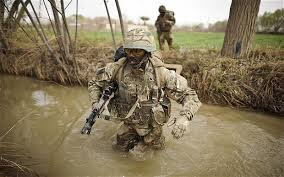
In 1948, a few weeks before abolishing racial discrimination in the armed forces, President Harry Truman signed a bill allowing women to serve permanently, not just in times of war. The first women were then promoted to general in 1970, and in 1976 females were admitted into the service academies. Today, women make up about 16 percent of the Army, and by 2016 they reportedly will no longer be excluded from ground-combat units.

The military has intervened abroad hundreds of times.
The United States has formally declared war on only five occasions: the War of 1812, the Mexican-American War, the Spanish-American War, World War I and World War II. Yet it has sent its armed forces abroad over 300 times “for other than normal peacetime purposes,” according to a congressional report issued in 2010. The first of those interventions was the Quasi-War against France in 1798-1800, whereas more recent actions have involved Iraq, Afghanistan and the war on terrorism.
For most presidents, a military career predated a political one.
Of the 43 U.S. presidents, 31 served in the military in one capacity or another. For some, the experience was short lived and inconsequential. Abraham Lincoln, for example, spent fewer than three months with the Illinois militia, seeing no combat except, as he later deadpanned, against mosquitoes. Others, however, were high-ranking career military men, such as General Ulysses S. Grant, commander of all Union troops at the end of the Civil War, and General Dwight D. Eisenhower, who spearheaded the D-Day invasion of World War II. The only non-officer of the bunch was James Buchanan, a private in the Pennsylvania militia during the War of 1812.
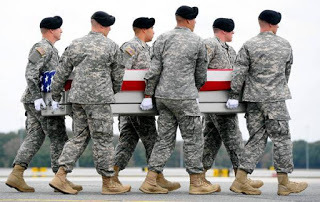
The military is the world’s largest employer.
With about 1.4 million active-duty military personnel, 1.1 million National Guard and reserve personnel and 700,000 civilian personnel, the U.S. Department of Defense employs more people than any other organization in the world. By comparison, the world’s largest corporation, Wal-Mart, has about 2.2 million workers on its payroll. The Department of Defense is also a huge land manager, controlling approximately 30 million acres worldwide, a swath bigger than Pennsylvania.
The United States budgets almost as much money as the rest of the world combined.
In 2013, the United States handed out $619 billion to the military, about as much as the next nine highest-spending countries combined and 37 percent of the worldwide total, according to the Stockholm International Peace Research Institute, which tabulates such numbers annually. Nonetheless, other countries are closing the gap somewhat. While military spending in the United States has dropped recently—it reached a peak of $720 billion in 2010—it has gone up an estimated 170 percent in China, 108 percent in Russia and 118 percent in Saudi Arabia since 2004.

Clancy's comment: Wow, that is a hellova lot of money spent on the military. Imagine what that sort of money could do for science, medical research, education etc? Gob smacking!
I'm ...


Published on June 22, 2016 16:23
June 21, 2016
22 June 2016 - MORE GREAT THOUGHTS
MORE GREAT THOUGHTS
G'day folks,
Time to think and smile and chuckle ...

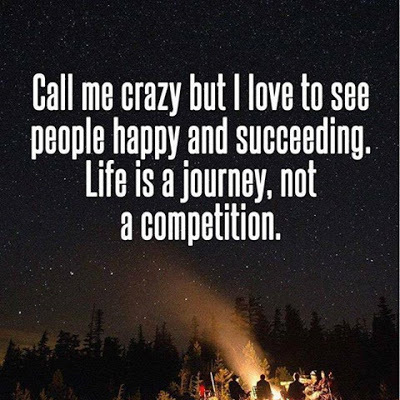
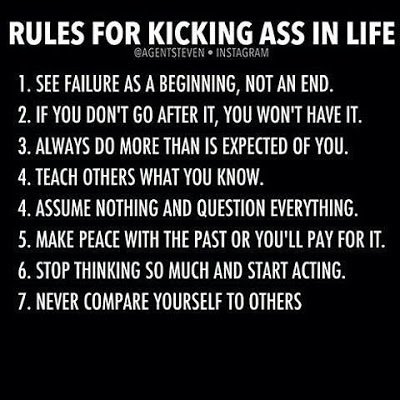
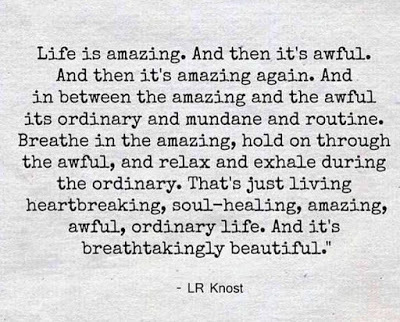
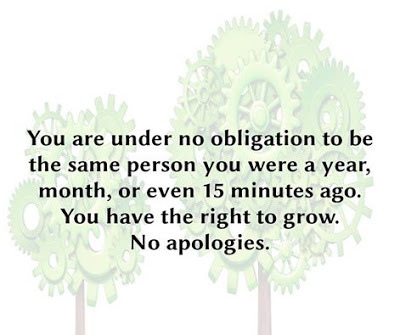
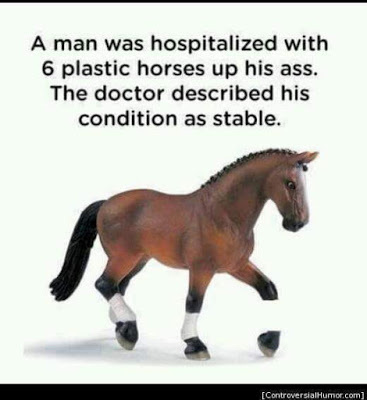
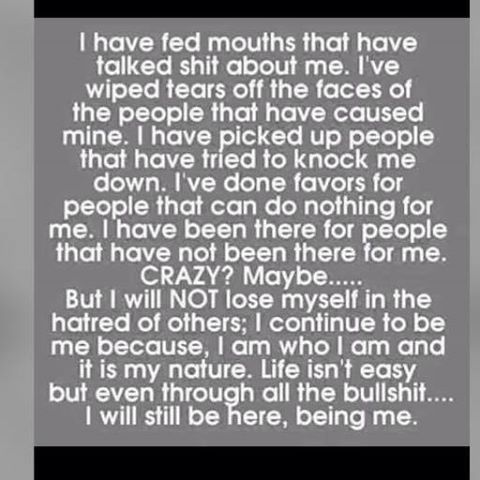


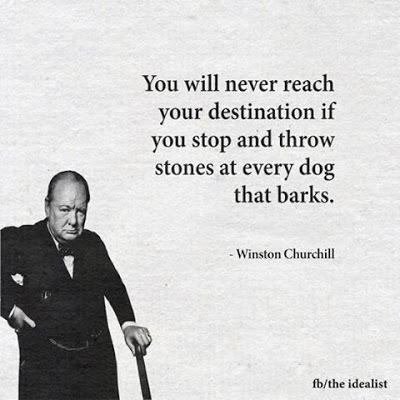


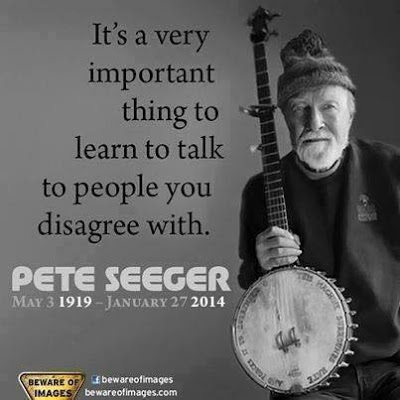





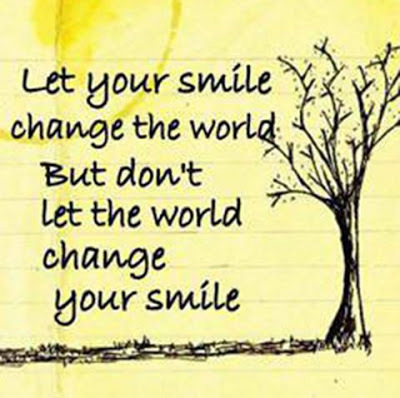


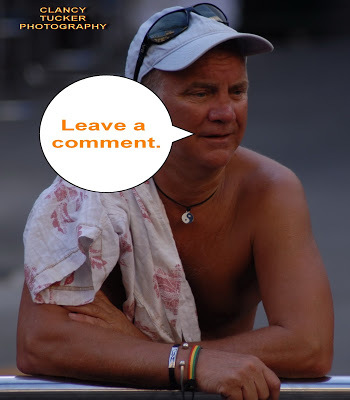
Clancy's comment: Loved many of these.
I'm ...


Published on June 21, 2016 15:31
June 20, 2016
21 June 2016 - THE GREAT BOB MARLEY

THE GREAT BOB MARLEY
G'day folks,
Welcome to some background on a very interesting man from Jamaica. Robert Nesta "Bob" Marley, OM was a Jamaican reggae singer, songwriter, musician, and guitarist who achieved international fame and acclaim.
Though Bob Marleydied of melanoma on May 11, 1981, the singer's popularity remains alive as ever. His ongoing celebrity has helped Marley's estate continue to make money (according to Forbes magazine, Marley earned $21 million in 2015, making him the deceased star with the fourth-highest income; proceeds go to his 11 children and his widow). While some of these earnings were from music — more than 75 million of his albums have been sold — Marley's post-mortem income also reached the stratosphere because his name and image are now used in numerous business endeavors. Here are some of the most interesting products that are tied to the artist and his legacy.
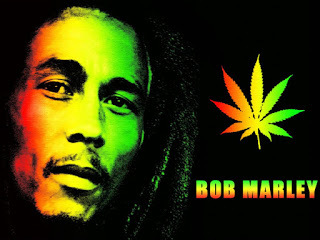
Marley Natural
Even the most casual Bob Marley fan knows about the musician's appreciation for "the herb," so it makes perfect sense that the Marley family entered into a licensing agreement in order to bring Marley-branded marijuana to the legalized market. The product line debuted in 2016; one of Marley's children, Stephen, told Billboard, "If my father was here physically, he would be up front advocating for this plant, so we are very proud to put our Marley Natural brand out there."
Right now Marley Natural offers four varieties of cannabis that are tailored to meet needs from anti-inflammatory use to a "full-body experience" (they're only available in places where possession is legal). Other Marley Natural products include lotions and soaps made with hemp seed oil (anyone, even in locations without legalization, can purchase these items).
Legalized marijuana is already a multi-billion dollar business, and it's going to get bigger as more places weaken or eliminate laws that restrict possession for personal and/or medical use. And Marley Natural is getting ready to welcome more customers as the market expands — as Rohan Marley, another one of Bob's sons, revealed in 2015, "We are absolutely preparing ourselves for when [marijuana] is completely legalized."
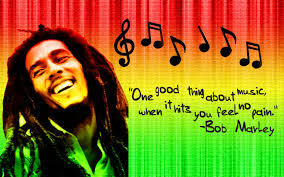
Marley Beverage Company
If cannabis in any form just isn't your thing, yet you're still interested in finding a way to de-stress your life, there's another Marley product for you: Marley's Mellow Mood beverages. These are decaffeinated teas and carbonated drinks whose ingredients — such as valerian root or lemon balm — are supposed to have calming and relaxing properties.
In 2012, Cedella Marley, Bob Marley's daughter, explained the impetus behind the product's launch the previous year: "I thought it was the perfect time, because everyone was Red Bulling it. There were too many hyper people running around in the world, ya know?" (Some stimulation is acceptable, however, as Marley Beverage Company also offers One Drop coffee drinks.)
Should you decide to have a Mellow Mood drink, be careful not to share them with any kids (as the product label advises). When a middle school in New Jersey stocked the drinks in its cafeteria in 2012, some students who drank Mellow Mood ended up feeling lethargic, nauseous and lightheaded.
Marley Coffee
Thanks to Rohan Marley, there's more Marley-affiliated caffeine out there. In 1999, Rohan bought some property in Jamaica and found that his new place was known for coffee. Inspired by the land, and by his father's unfulfilled dream of rural retirement — Rohan told The Splendid Table, "He would always say in his interviews that one day he was going to stop playing music and go back to the farm" — Rohan eventually went into the coffee business.
Marley Coffee's offerings now include "Get Up, Stand Up," "Smile, Jamaica," "Lively Up!" and "Mystic Morning." Yes, those names should sound familiar — in addition to being a great musician, it turns out that many of Bob Marley's song titles are perfect for coffee. Who knew?
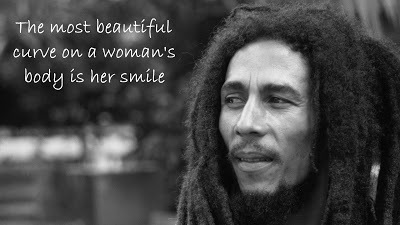
Marley for Kids
If you'd like to inspire young Bob Marley fans in your life, there are products out there for them as well. For example, Cedella Marley used her father's lyrics as a starting point to write children's books. In an interview with the Huffington Post, she noted, "My father, he speaks to everyone. He can speak to a child and he can speak to an adult."
The books produced by Cedella (so far) are: One Love (based on the song of the same name) and Every Little Thing (from the song "Three Little Birds"). In addition, the young girl from the book One Love has appeared as a "One Love Doll."
Cedella's writing also served as a starting point for her to create a children's musical featuring some of Bob Marley's songs (meaning that things had come full circle, as a song originally inspired the children's book the musical was based on). When she attended a performance of Three Little Birds in Washington, D.C., Cedella was delighted with the young audience's response, as she later told The Wall Street Journal: "To see the little children in the audience singing along — I thought maybe they would know 1-2 songs, but they knew so many."

The Future of Marley
Of course, there are many other Marley products out there: House of Marley adheres to Bob Marley's ethos of sustainability by producing eco-friendly speakers, headphones and more; and Marley Apparel has clothing that's inspired by Bob Marley's style. Plus there are numerous items — from T-shirts to posters to lava lamps — with Marley's face on them.
However, there doesn't seem to be a saturation point for Marley — when asked by Philadelphiamagazine in 2015 what it was like to see his father's face on so much merchandise, Stephen Marley responded, "I love seeing my dad’s face everywhere," adding, "It’s more than him being my dad, it’s what he stood for. He’s so strong. When I see the image, it does the same thing for me as if I wasn’t his son. He’s a leader and is like a book to guide us through life."
And by sharing products inspired by Bob Marley — and increasing his estate's value — the Marley family is following in his footsteps. As Rohan Marley told The New Yorker in 2014, "My father was the first entrepreneur in the family. He started his own record label, his own restaurant. He knew that, in order to give something back to the people, he had to create. You can’t be no philanthropist, no Warren Buffett, unless you make something first."

Clancy's comment: I bet you didn't know all that. Go, Bob!
I'm ...
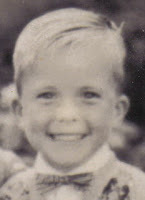

Published on June 20, 2016 15:23
June 19, 2016
20 June 2016 - VALE ALFRED KOURIS

VALEALFRED KOURIS OAM
G'day folks,
Many of you know that I've always been a supporter of the underdog, kids, women, refugees, and migrants who have made the ultimate sacrifice to leave their homeland and begin a new life in another land. Sadly today, I honour the passing of such a man - ALFRED KOURIS. Many of you may not know that Australia has been the recipient of many migrants since the day it was established as a penal colony in 1788. The gold rush of the 1850's also brought countless people to this country. However, post-war, there was a massive influx of migrants who I think have made an extraordinary contribution to this nation. Example? About five years ago, every State Premier and Governor was a second generation Australian, including the Governor General.
I began my working life as an Immigration Officer and it became one of the biggest influences in my life. Having said that, I recall a senior officer making a comment at a training course - one I never forgot, 'To leave your homeland and begin a new life in another country is the biggest decision you'll ever make.'
Today, I re-feature a man who did just that. He and his family came from Greece, made great sacrifices, and worked hard to become an Australian success story in Melbourne, Victoria, Australia. Mr Kouris featured as a guest on my blog some time back. However, out of respect to him and his family, I wanted to honour his extraordinary contribution to Australia. So, who was he, and what did he do?
May I respectfully introduce Mr Alfred Kouris.
Alfred Kouris was born in July 1927 at Halepa, in the Chania district of Crete, Greece. His father, Paul Kouris, was born in the island of Kefalonia, Greece in 1900 and worked for the National Bank of Greece in Chania. His father was a High Court Judge. Paul in Chania met Antigone -the daughter of the local magistrate, George Polioudakis from Sphakia, fell in love and decided to get married in 1922. They stayed in Crete until 1932. Then Alfredos' Father was posted by the National Bank to Peloponisos, and finally in 1938 Paul and Antigone Kouris moved to Athens.
Alfred - (called Alfredos in Greek) - his sister Thalia, (a famous actress in the '40s in the Greek Drama Theatre, was also born in Chania in 1924 and youngest brother, George, was born also in Agios Nikolaos of Crete in 1932. Alfredos finished his Secondary Education in Athens and Political Sciences in "Panteio University", completed his two years national service in the Greek army and married on the 6th of January 1954 to Euthymia loannidou, who was born in Athens.
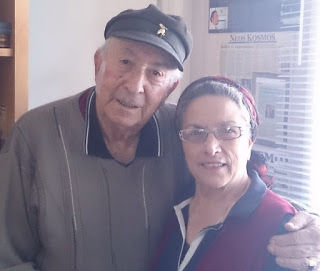
On the 14th of April 1955 their son Paul was born in a clinic in "Monastiraki" of Athens. Although Alfred was well educated, he could not get a job in the Navy and /or the Greek Foreign Office and decided to start a shirt manufacturing business with his wife under the name of "FAVORY SHIRTS". Needless to say, the competition was so hard that in February 1956, Alfred and Euthymia (Mitsi) decided to immigrate to Australia and departed on the vessel "KYREINIA". On the 16th of March 1956 they arrived in Melbourne and two days after they started work at the famous “Pelaco” factory in Richmond, cutting and making shirts. Within six months they bought their own brand new house in Glenroy - on terms, their own car, a little Morris Minor, and started their own business: "The Hellas Professional Training School for Clothing Machinists" on the corner of Elizabeth St. & Lonsdale St. in a three-storey old city building, where today is the Myer Emporium.
In 1958 they moved the Hellas School to 343 Elizabeth St. (corner of Latrobe St.), started another business under the name "Primo Clothing Pty Ltd" and did very well. In 1960 they brought their mother from overseas and in 1961, also his brother, George Kouris, with his wife Helen and one year old son, Paul - from Greece - and made him equal partner in "Primo Clothing", making jerkins, waistcoats and casual wear. The said business grew rapidly until 1964 when the economy started to go down the drain and manufacturing was no longer profitable.
Alfred and George decided at this stage to start a retailing business. They rented a shop at 246 Swanston St. Melbourne, next to Stanley Young (Giannopoulos) in 1964, giving their new venture the name 'ALFREDOS' MENSWEAR Pty Ltd’.
By 1967 the retailing business was doing very well and the Kouris Bros. decided to open a second shop in the golden corner of Foys Ltd, Swanston & Bourke St., at number 263, giving it the name 'ALFREDOS' of Bourke St. Pty Ltd".
In 1968, the Kouris Brothers opened, at 443 Bourke street, a third "Alfredos' Menswear shop " and a fourth " Alfredos' Dollies Boutique", and in 1969 a fifth "Alfredos' Menswear Shop" and a sixth "Alfredos' Dollies Boutique "in the City's newly opened Mid-City Arcade.
Alfredo Kouris, as founder and Director of "Alfredo's Mens & Ladies Wear", was by then well-known, and early in1969 he was visited on behalf of the "Victorian Retailers Association" by Mr Redfern, Managing Director of Buckley Ltd (now David Jones Ltd) and asked to join the governing board of the Association, which was run at that time by the owners and Directors of Melbourne's biggest Stores and Supermarkets.
That is how Alfredos started his colourful career across five decades, making an extraordinary contribution to the Victorian community, fully understanding what it is like to come from a distant land and make Australia home.
Soon he became a Greek Community Leader, well known businessman, politician, journalist and publisher. He not only lived the life of the migrant, but delved into its psyche, extolled its virtues, and worked diligently to generate acceptance. Along the way, he sparked reforms that have re-shaped the way Victorians go about their daily lives. Inspired by his Greek upbringing, Alfredo Kouris gave Melbourne "Late-Night Shopping" with his campaign in the 1969-1970, as founder and Chairman of "Make Melbourne Brighter Committee", revolutionising retail business, in the process of which, he was arrested and fined!
In the early 1980s, Mr Kouris pushed for the end of archaic drinking laws with his same "Make Melbourne Brighter Committee", which was reorganised by him with new young members, lawyers, journalists, shopkeepers and others with vision.
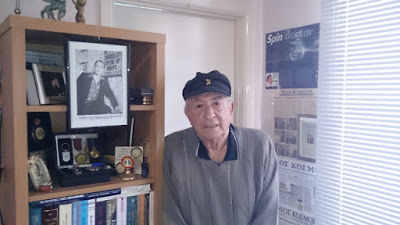
Alfredo Kouris, as a Publisher and Editor of "PYRSOS", the "New Torch Greek Newspaper" and the "Omoyeneia" Greek Magazine, from July, 1985 until April, 1993, worked hard to introduce Greek Migrants in particular, and all migrants in general, to stand in Local, State and Federal Government elections with the catchcry of a "FAIR GO" for migrants. To set an example, he stood himself as an independent candidate in Victoria in the Senate Elections in 1970, in the Melbourne City Council Elections in 1972,1973 and 1974, and in the State Elections in 1976 as the Endorsed Liberal Candidate in Brunswick.
Alfredo Kouris’ views on prejudice, regularly made headlines, and he was involved in many complex political, social and religious issues that the community at large faced, discussed and resolved. He was respected for his leadership, vision and determination to find a solution best for all, as President of the "Greek Orthodox Community of Mentone & District " from 1962-1989, as a foundation member of HACCI in 1984 and Vice-President in 1990-1992, and a Vice-President of the "Victorian Federation of Greek Communities " in 1987-1989, and Member of the "Festival Antipodes Executive Committee" in 1988-89. Also, as a regular member of the Greek Orthodox Community of Melbourne and Victoria from 1958 until now, and elected member of the Executive Committee of the said Community from 1991-1992.
His understanding of the migrant experience is encapsulated in the title of his book based on his life:
"MIGRANT-The Blessing & Misfortune of Loving Two Countries." It honours the millions who left their homeland and settled in not only Australia, but around the world. It highlights their challenges, joys and sorrows, but importantly, the remarkable contribution they've made to the growth and change of their adoptive countries. I have a copy of this book and it is a remarkable coverage of Greeks in Melbourne, Australia, especially the life and times of Mr. Alfred Kouris. No wonder Melbourne has been described as the third largest Greek city in the world.
The release of his memoirs brought world-wide recognition. He is listed in "Who's Who" in the 21st Century" published by "The Cambridge Biographical Centre in England, and his book is available in 250 American, European and Australian University Libraries, 500 Greek & Australian State Libraries and 200 Australian Schools with "Languages Other Than English - LOTE" programs.
His research inspired him to urge for a national "Migrants Day" as First Class Citizens of the World, and upgrade recognition of the significance of the pivotal World War 2 Battle of Crete, which saw Greeks and British, Australians & New-Zealanders fighting side-by side for Freedom, Justice and Democracy.

Alfredo Kouris has received numerous honours for his endeavours promoting community harmony, including the Gold Cross presented to him by Archibishop Lezekiel in recognition for services to the Orthodox Church, and Life Membership of La Trobe University's National Centre for Hellenic Studies and Research, where he has also been allocated a room to display his very valuable archive materials. He was also elected Life Governor of "FRONTIDA CARE Inc."
"Neos Kosmos" in its English Edition on Monday, 15th of December published an article entitled:
"Prominent Greek Honoured", with the following comments: “ALFREDO KOURIS has never been one to let things slide. He has always believed that if you want something bad enough then you have to work hard to get it. And so he worked hard on fighting for migrant rights and the rights of all Melbournians. He was even jailed once in 1970, because he believed campaigning for late-night trading was a cause worth fighting for.
As the founder of Alfredo's Menswear, Kouris saw a niche for late night trading and launched a campaign to have opening hours extended to 9 pm. "I wanted to bring Melbourne alive and I knew late-night trading would help do that," he said. "I couldn't understand why the city should die every evening." By defying the State Government and opening his six menswear stores past 5.30 pm, he was arrested and fined $8,000. One week later, the law was changed and stores could now be open until 9pm.
He was honoured, by receiving an award at Victoria's Award for Excellence in Multicultural Affairs. "I always felt that I had to prove myself worthy of being considered a first -class citizen in Australia," said Kouris. "I started to say to migrants that we should prove ourselves by doing something good for our new country." In early 2004, Mr Kouris and wife, Mitsi, who have three children and five grandchildren, celebrated not only 50 years of marriage, but of being a fine example of a young couple coming to Australia with little more than a suit-case of dreams and making a wonderful success of the migrant experience.

Alfredos Kouris received an Order of Australia medal on the 12th of June 2006, from the Governor of Victoria, His Excellency John Landy, AC, MBE, at Government House … “ For service to the community through contributions to the business sector, raising public awareness of the issues facing migrants, and to the Greek community.”

Clancy’s comment: What courage and vision, eh? What a massive achiever. Mr. Kouris has achieved much in his new country. Besides business, he has been a great mover and shaker within the Greek community and Australian community in general, founding the Academy of Modern Greek, and was the Chair of Modern Greek at Melbourne University?
PS: After I featured Mr Kouris on this blog, he sent me a delightful message:
"Clancy thank you.
You have captured my life and presented it beautifully. Yours is not simply a superficial piece. You have read my book and understand me. You have displayed an insight into my life that has touched me deeply.
Again I thank you, from the bottom of my heart.
Alfred Kouris OAM"
Thank you, Mr Kouris, for your extraordinary efforts. Australia is a better place because of you. My sincerest condolences to the Kouris family.
Sadly, we've lost a good man, but I’m sure glad you came to Australia, Mr Kouris.
Loved ya work!
I’m …

 REST IN PEACE
REST IN PEACE
Published on June 19, 2016 15:00
June 18, 2016
19 June 2016 - SENATOR RAND PAUL

SENATOR RAND PAUL
G'day folks,
Welcome to some background on a fairly controversial US Senator. Randal Howard "Rand" Paul is an American politician and physician. Since 2011, Paul has served in the United States Senate as a member of the Republican Party representing Kentucky. He is the son of former U.S. Representative Ron Paul of Texas.
Senator Rand Paul, son of Congressman Ron Paul of Texas, is best known for his support of the Tea Party movement and his controversial comments on the Civil Rights Act.
“I have a message from the Tea Party, a message that is loud and clear and does not mince words. We've come to take our government back.”—Rand Paul
Born in Pennsylvania in 1963, Rand Paul became involved in politics in 1994, when he founded Kentucky Taxpayers United, a watchdog group that tracked taxation and spending in Kentucky until it dissolved in 2000. Rand Paul gained national attention when he campaigned for his father, Ron Paul, who was running for the Republican presidential nomination in 2008. He attracted a small but passionate following which helped him win the U.S. Senate seat for Kentucky in 2010. Paul is the first U.S. Senator to serve alongside a parent—his father Ron Paul—in the U.S. House of Representatives.

Early LifeBorn Randal Howard Paul on January 7, 1963, Rand Paul is the third of five children born to Ron Paul—a U.S. Congressman and 2012 Republican presidential candidate—and his wife, Carol. Like his siblings, Paul was baptized and raised Episcopalian. In 1965, when he was still a toddler, the family moved from Pittsburgh to San Antonio, Texas, and eventually settled in the Texas town of Lake Jackson.
Paul attended Baylor University and then the Duke University Medical School, his father's alma mater. After receiving a medical degree in 1988, Paul pursued a general surgery internship at the Georgia Baptist Medical Center in Atlanta, Georgia. While there, he met Kentucky native Kelley Ashby. The couple dated for a couple of years and married in 1991, and when Paul finished his ophthalmology residency at Duke two years later, they moved to Bowling Green, Kentucky to start a family and Paul's medical practice. They soon had three sons, William, Duncan and Robert.
A long time member of the service organization Lions Club International, Paul founded the Southern Kentucky Lions Eye Clinic, a nonprofit offering free eye care to patients in need, in 1995. He also performed free eye surgeries for impoverished children in developing countries through the Children of the Americas program.

A lifelong Republican with Libertarian leanings, Paul became involved in political causes in 1994, when he founded Kentucky Taxpayers United, a watchdog group tracking taxation and spending issues in the Kentucky state legislature until it disbanded in 2000. Rand was inspired to become involved in politics, in part due to his father, Ron Paul, who was the first member of the Paul family to run for and win political office. His father served the state of Texas in the U.S. House on three separate occasions, beginning in 1976. Ron Paul became nationally famous by running for the Republican presidential nomination in 2008, after running twice in the presidential election as a Libertarian candidate. Though his candidacy was ultimately unsuccessful, Ron Paul's Libertarian platform attracted a small, but passionate, following. Rand occasionally filled in for his father on the campaign trail, offering populist speeches that echoed his dad's small-government beliefs.
In the wake of the September 2008 American economic crisis, Rand Paul became active in the Kentucky branch of the burgeoning, nationwide anti-tax movement known as the Tea Party. He began hinting that he might run for the seat of retiring Kentucky U.S. Senator Jim Bunning. On December 16, 2009—the 236th anniversary of the Boston Tea Party—Paul announced his intention to run for a seat in the U.S. Senate. He had never before sought political office. "If there's ever a year for an outsider who has never held office before, this is the year," Paul told the crowd gathered in Russellville, Kentucky. He ran on a platform that mixed traditional Libertarian issues, like reducing taxes and the size of government, with socially conservative policies like a federal ban on abortion.
In the Kentucky Republican primary, Paul was up against Kentucky Secretary of State Trey Grayson, the protégé of powerful Senator Mitch McConnell. Though Grayson had been backed by McConnell and other Republican luminaries like former Vice President Dick Cheney, Paul's grassroots campaign attracted endorsements from such influential figures as Steve Forbes, Focus on the Family's James Dobson and former vice presidential candidate Sarah Palin. On May 18, 2010, Paul won the primary in a resounding upset victory, defeating Grayson by 24 points.
Immediately after his win, Paul faced intense national criticism for current and past comments that critics viewed as ideologically radical. He was particularly criticized for his suggestion that the Civil Rights Act of 1964 was too broad in scope and should not apply to business. He later clarified that he would have supported the act had he been in the Senate at that time, and then stepped out of the public spotlight for a while to repair the public damage, pulling out of scheduled appearances, including one on Meet the Press.

Paul faced Democratic Kentucky Attorney General Jack Conway in the November 2010 general election and emerged victorious, becoming Kentucky's junior senator in January 2011. His victory was the first major win for a candidate so closely identified with the Tea Party.Rand has focused on a range of issues since beginning his term in 2010, including reducing federal debt, cutting Social Security benefits and lifting restrictions to businesses created by the U.S. Environmental Protection Agency. A resolution introduced by Rand to overturn EPA-initiated power plant pollution rules was blocked in the Senate in November 2011.
In the spring of 2012, media speculation began to center around the possibility of Paul becoming the Republican pick as a running mate for former Massachusetts governor and 2012 Republican presidential candidate Mitt Romney. In February 2012, he stated that he would be "honored" to be considered as Romney's vice president. In May 2012, Paul received some media backlash for stating at a Faith & Freedom event in Iowa that he wasn't sure that President Obama's marriage views "could get any gayer." He later added that he didn't mean to preach to citizens, he just wanted to voice his support for traditional marriage.
Paul again made headlines in 2013 with his nearly 13-hour-long filibuster speech in the Senate. Taking the floor, he spoke against the confirmation of John Brennan as the new head of the CIA. Paul also took this opportunity to voice his objections to President Barack Obama's policy of using unmanned drone strikes against terrorists. Brennan has been involved in helping to shape this policy as a counter-terrorism advisor to the president. While he knew he couldn't stop Brennan's appointment to the CIA post, Paul hoped that his filibustering efforts would lead to greater debate on limiting the president's power to order such strikes. "No president has the right to say he is judge, jury and executioner," Paul said, according to CBS News.

Presidential Run
On April 7, 2015, the Kentucky senator announced on his website that he would be running for president in 2016. "I am running for president to return our country to the principles of liberty and limited government," Rand said.

Clancy's comment: Mm ... Interesting times ahead.
I'm ....

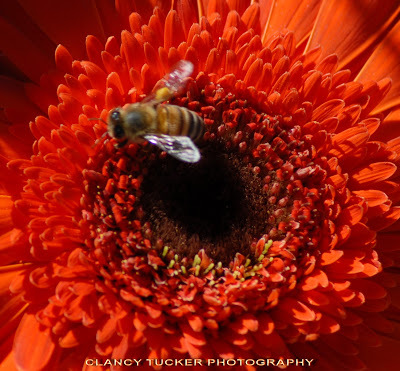
Published on June 18, 2016 15:04
June 17, 2016
18 June 2016 - ORIGINS OF 'TAPS'

ORIGINS OF 'TAPS'
G'day folks,
The origins of “Taps,” the distinctive bugle melody played at U.S. military funerals and memorials and as a lights-out signal to soldiers at night, date back to the American Civil War.
In July 1862, U.S. General Daniel Butterfield and his brigade were camped at Harrison’s Landing, Virginia, recuperating after the Seven Days Battles near Richmond. Dissatisfied with the standard bugle call employed by the Army to indicate to troops it was time to go to sleep, and thinking the call should sound more melodious, Butterfield reworked an existing bugle call used to signal the end of the day. After he had his brigade bugler, Private Oliver Wilcox Norton, play it for the men, buglers from other units became interested in the 24-note tune and it quickly spread throughout the Army, and even caught on with the Confederates.

Not long after Butterfield created “Taps,” it was played for the first time at a military funeral, for a Union cannoneer killed in action. The man’s commanding officer, Captain John Tidball, decided the bugle call would be safer than the traditional firing of three rifle volleys over the soldier’s grave, a move which couldn’t been confused by the nearby enemy as an attack.

As for the name “Taps,” the most likely explanation is that it comes from the fact that prior to Butterfield’s bugle call, the lights-out call was followed by three drum beats, dubbed the “Drum Taps,” as well as “The Taps” and then simply “Taps.” When Butterfield’s call replaced the drum beats, soldiers referred to it as “Taps,” although this was an unofficial moniker, according to “Taps” historian and bugle expert Jari Villanueva. He notes that Butterfield’s bugle call was officially known as “Extinguish Lights” in American military manuals until 1891. Since that time, “Taps” also has been a formally recognized part of U.S. military funerals.
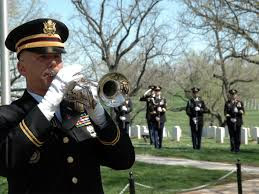
Today at Berkeley Plantation, the historic estate located at Harrison’s Landing, there’s a monument commemorating the origins of “Taps” at the site. Berkeley Plantation also happens to be the birthplace of Benjamin Harrison V, a signer of the Declaration of Independence, and William Henry Harrison, the nation’s ninth president.

Clancy's comment: I have heard this haunting sound in many places around the world ... Washington DC, Turkey, Australia, Thailand etc. It always makes the hairs rise on the back of my neck, and so it should.
I'm ...
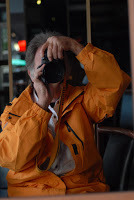
LEST WE FORGET

Published on June 17, 2016 15:49



